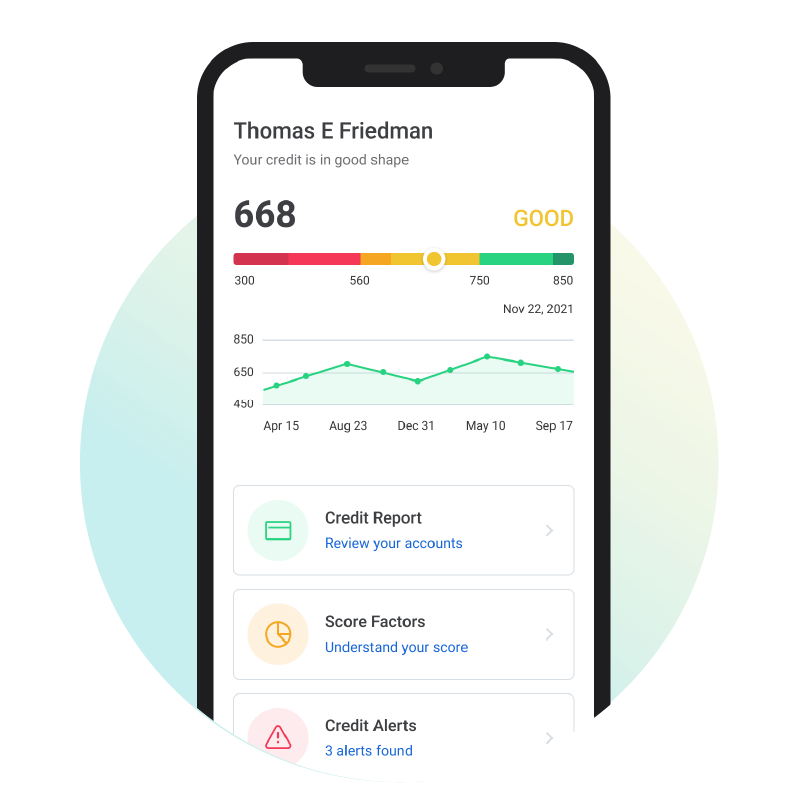It’s a challenging time for many Americans at the moment. Financial health declined for the first time in five years since the Financial Health Network began studying financial health trends in the U.S.1
And it’s an uphill battle for the majority of Americans. We’re dealing with astronomical cost of living rises, inflation, a tightening labor market, rising real estate costs—just to name a few.
But it’s during times of struggle that fintechs and financial institutions have the opportunity to build meaningful relationships with their customers—anchored on a foundation of trust.
A recent J.D. Power study showcased just how stressed and financially uneasy consumers are2. “It’s an incredibly tenuous time for both bank customers and financial institutions, and the need for trust between these two parties has never been more pronounced”, said Jennifer White, senior director of banking and payments intelligence at J.D. Power.
Embedding a robust and genuine financial empowerment strategy can not only attract new customers but also drive engagement and retention—all while building a trusted relationship between the organization and the consumer.
We’ll outline why a financial empowerment strategy is a key differentiator for fintechs and financial institutions and where to start.
You got me?
First, let’s break down trust. Why does it matter so much? Can’t organizations just offer the baseline products and services and call it a day?
Have you seen the movie Click? The one where Adam Sandler uses some crazy, Christopher Walken technology to fast forward through the “boring’ parts of his life—only to find himself full of regret later, having missed many cherished moments with his family?
It’s kind of like that…kind of. Consumers can tell when their providers are just phoning it in.
As consumers, we need to genuinely believe that our primary financial institution is doing what they can to support us and our financial goals—especially in dire times. Otherwise, we’re taking our dollars elsewhere. We have no shortage of fintechs and financial institutions asking for our time, money and attention.
And that’s basically it.
So when we say to our primary financial institution, you got me? The answer has to be unequivocally - yes, we got you.
Because trust is at the epicenter of every successful consumer to business relationship. Without it, customer attrition is just a matter of time.
Going beyond traditional banking services and into comprehensive financial empowerment solutions
Now that we’ve established that trust is at the foundation of a consumer engagement strategy, what now?
Findings in a recent Financial Health Network study found that 80% of consumers want their financial institution to improve their financial health but only 14% of consumers feel that their financial institution is actually helping3.
That’s quite the disparity.
But it’s also an opportunity. Fintechs and financial institutions can help bridge this gap and use this as a chance to build trust and strengthen their customer relationships.
And given this disparity, this also means that competitors aren’t closing the gap.
In fact, “30% of primary bank customers have shifted, on average, 37% of their deposits to a secondary financial provider.”4
Woof.
Combine overwhelming consumer demand for financial institution support, an uneasy economy and the ease in which consumers can move their deposits, it’s clear that a financial empowerment strategy can be a key differentiator for fintechs and financial institutions.
So, where to start?
Conduct an assessment of what you’re offering customers today
To know how to get to our destination necessitates understanding where we are today.
Product Assessment: What does our current product offering look like? Do we offer the baseline of products that will help our customer on their financial journey—especially in times of hardship? Can they come to our digital experience for the basic information they need about their finances? For example, do we offer basic credit monitoring tools? Is our current product suite enough?
Culture Assessment: Do we think in a customer centric way? Ideally everything we do is designed to help our customers (which in turn, should boost our engagement and revenue metrics if we’re doing it right). Is being customer centric woven into our language, our discussions, our meeting agendas
Customer Experience Assessment: How do customers view us today? Are they enjoying their experience with us or have we been battling a slew of complaints? Does our digital experience stand up to their expectations?
Once we have a clear understanding on where we stand today in terms of our product offerings, how customer centric we are (or are not) and how customers view us today, we can move onto the next phase.

Financial wellness isn’t a feature—it’s your next growth strategy.
Cultivate an understanding of what an ideal state looks like for you and your consumer
Now to decide where we want to go.
In order to build a financial empowerment strategy that works to engage, retain and build trust, the criteria for a future state needs to be:
-
Our product offering needs to be viewed by the customer as helping them with their financial health goals.
-
The customer needs to be woven into every strategy conversation to keep them at the center of our decisions.
-
Our digital experiences need to surpass our customers’ expectations, delighting and surprising them.
Now what?
Building out a roadmap to get you from A to B
Product Roadmap: If you’ve assessed that your current product slate could benefit from additional products that would help with your customers’ financial health, great! You’re on a worthy path. Solidify the list of products to add to your repertoire with a firm rationale on how each of those products will move the financial health needle for you and your customers. (We recommend credit monitoring and identity protection as a starting point if you don’t already have it! Helping your customers furnish their data to bureaus so they can build their credit history can be a great start too.)
A few questions to aid you in your journey:
-
How can you enrich your existing digital platform to proactively address customers’ financial concerns and goals?
-
What kinds of products can drive positive behavioral change that will meaningfully address customers’ financial goals?
-
Do you have the resources to build the products internally? If not, going the buy (vs. build) route will oftentimes make more sense for organizations who don’t have the skills or resources necessary to scope and build the products themselves (which is the majority of organizations so you’re in good company).
-
Going the buy route? Check out our post on how to select a solution provider that will help you accomplish your goals.
Culture Refresh: If you’re thinking that your customers have fallen off the agenda lately, don’t worry. It just takes one person to transform a culture. In any product or strategy discussion, ask the question—how will this impact our customer? Does it have the capability of improving our customers’ financial situation? As you continuously bring up these customer centric questions, your colleagues will begin to take notice and will proactively bring up those questions too in other discussions because it’s become a force of habit.
Digital Delight: This one will take a bit of research. Talk to your customers and hear from them verbatim on how you can make the experience better. Ideally user interviews are already a part of your UX/UI development process but if not, chatting with them can be a great place to start and they’ll know that you’re invested in understanding their perspectives. If you’re looking to partner with a solutions provider to bring in new products, make sure their user experience is solid and will add to your existing experience. Better yet—if they can private label their products to reflect your brand’s look and feel, that’d be easier for you and your implementation team.
With a solid roadmap that includes financial empowerment products, a culture on its way to unlocking customer centricity and a path to continuously delighting and engaging our digital users, your organization can be well on its way to building a trusting, authentic and enduring relationship with customers.
When customers are getting help from their financial institution, it shows in the bottom line.
“Customers who have received advice/guidance in the past 12 months are significantly more likely to have opened a new account with their primary bank, and the rate of new account openings grows even higher when the advice completely meets customer needs. Nearly half (47%) of those who received effective advice opened a new account.”5
In a competitive landscape amidst a tough economy, a strong financial empowerment strategy can serve as a powerful differentiator for customer acquisition. By offering the products, tools and guidance customers need, fintechs and financial institutions can attract individuals who seek more than basic banking services.
Positioning the organization as a financial empowerment advocate during the customer acquisition phase can create a strong initial impression and build long-lasting relationships.
A solid financial wellness strategy is not just a checkbox; it’s a commitment to empowering customers and providing them with the tools and support they need to achieve financial well-being.
Offer financial empowerment tools that build trust and drive lasting growth.
Book a 15-min call.
1 Financial Health Pulse 2022, US Report
2,4,5 US Retail Bank Customers: Stressed and Looking to Their Bank for Help, J.D. Power Finds, Mar 2023
3 Building Valuable Customer Relationships Through Financial Health, Financial Health Network, 2020
Disclaimer: Array takes pride in ensuring the information we share is accurate and up-to-date; however, we understand that the information you read may differ from the product(s) and/or service(s) mentioned. We present the product(s) and/or service(s) you read about without warranty. We recommend you review the product and/or services’ terms and conditions before you make a decision. If you encounter inaccurate or outdated information, let us know by writing to: info@array.com.
Editorial Note: This content is the author’s opinion, expression, and/or recommendation(s).



